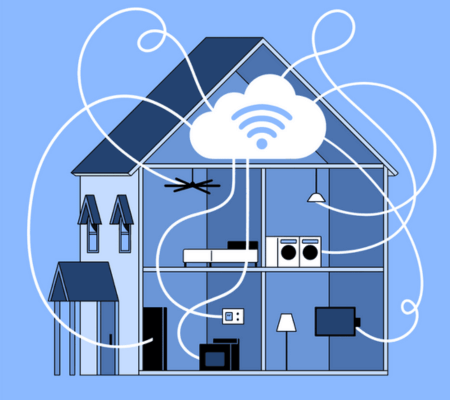Welcome to the future of temperature control – where your thermostat is not just a device hanging on your wall, but an intelligent companion that adapts to your needs and helps you save money while keeping you comfortable. That’s right, we are talking about smart thermostats!
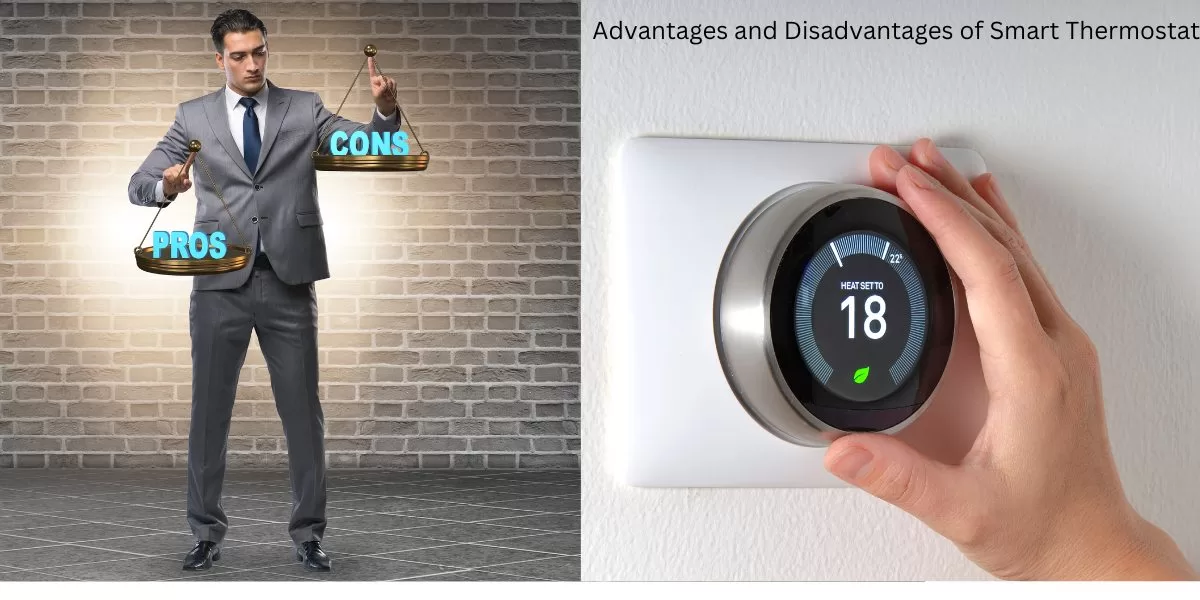
Gone are the days of manually adjusting the temperature in your home or dealing with unpredictable energy bills. With a smart heating thermostat, you can take control of your heating and cooling system like never before. But before we dive into the advantages and disadvantages of these nifty devices, let’s first understand what exactly a smart thermostat is.
Imagine having a thermostat that learns from your habits, adjusts itself based on weather conditions, allows remote access through an app on your phone, and even integrates with other smart devices in your home – all aimed at creating a seamless experience for you. Smart thermostats offer this and much more.
Related: 5 Best Programmable Thermostat Under $50
Advantages and Disadvantages of Smart Thermostats
Advantages of Using a Smart Thermostat
Smart thermostats offer a range of advantages that make them an attractive option for homeowners looking to enhance their comfort and energy efficiency. One major advantage is the potential for cost savings. By optimizing temperature settings based on occupancy patterns and weather conditions, Simple programmable thermostat can help reduce energy consumption and lower utility bills.
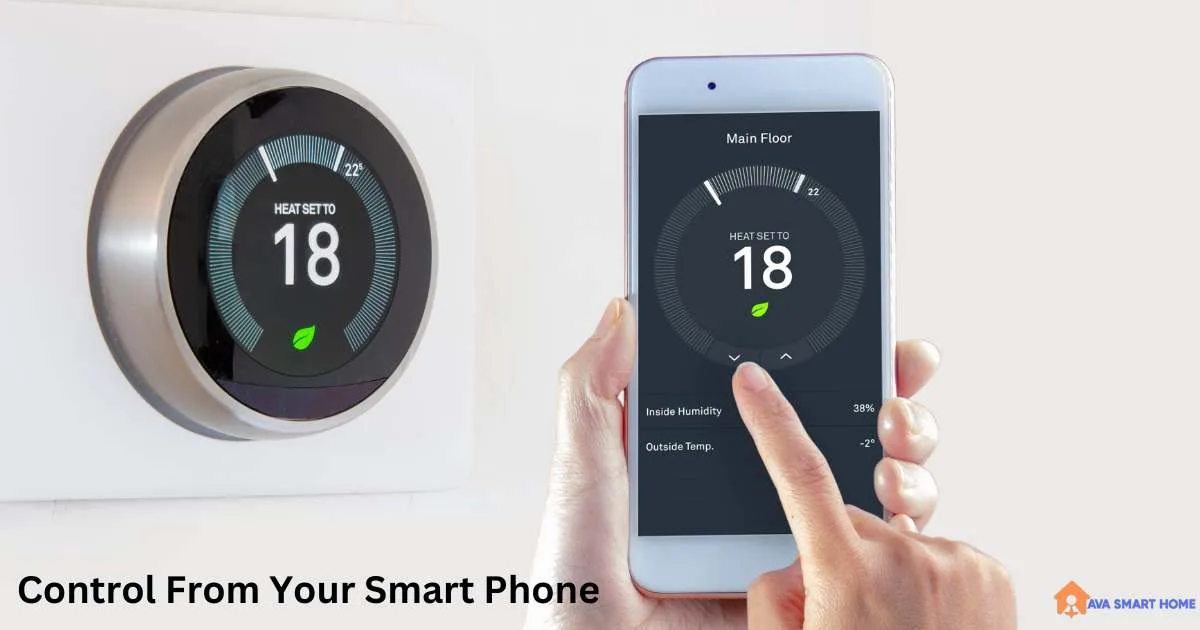
Another key benefit is improved energy efficiency. Smart thermostats provide precise control over heating and cooling systems, allowing users to set personalized schedules and adjust temperatures remotely. This level of customization ensures that the HVAC system operates only when needed, resulting in reduced energy waste.
Convenience and control are also significant advantages of using a smart thermostat. With features like automated scheduling, geofencing technology, and voice command integration, users can easily manage their home’s climate settings without having to manually adjust the thermostat constantly.
Additionally, remote access and monitoring capabilities give homeowners peace of mind while they are away from home. Whether you’re at work or on vacation, you can use your smartphone or computer to monitor and adjust your home’s temperature settings remotely.
While there are several advantages to using a smart thermostat, it’s important to consider some potential drawbacks as well
1. Cost Savings
When it comes to cost savings, a smart thermostat can be a game-changer for your home. The ability to program and automate temperature adjustments based on your schedule and preferences can lead to significant energy savings over time.
With a traditional thermostat, you may find yourself constantly adjusting the temperature manually throughout the day. This can result in wasted energy when you forget to turn down the heat or AC before leaving the house. However, with a smart thermostat, you can easily set up schedules and presets that automatically adjust the temperature when you’re away or asleep.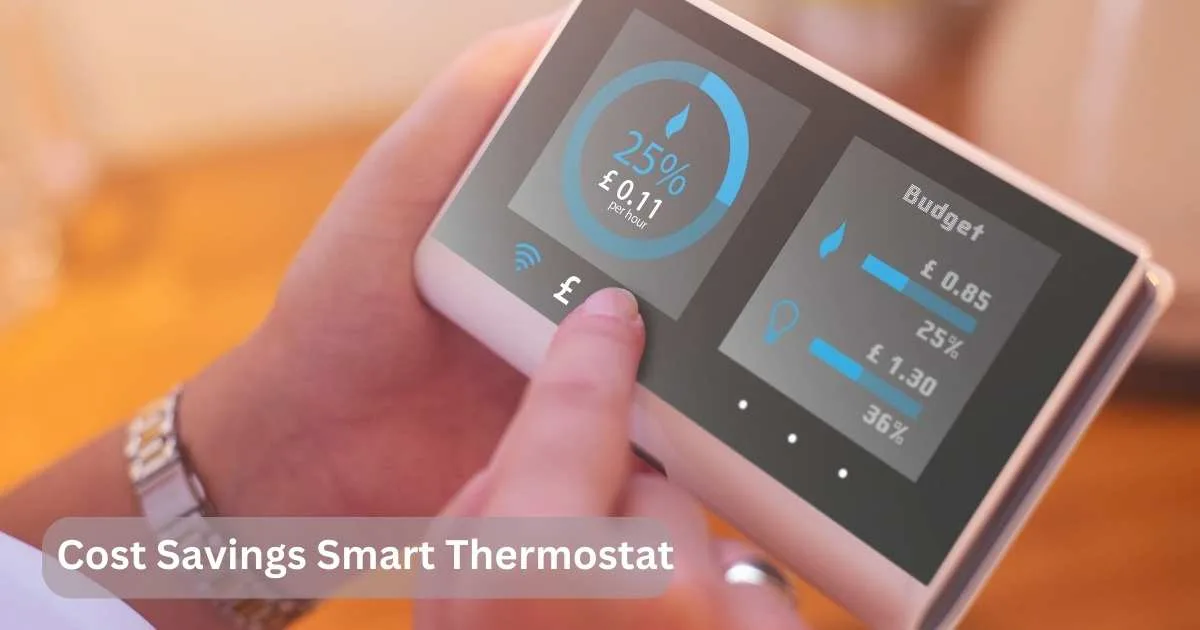
Additionally, many smart thermostats have features such as geofencing that detect when you leave or arrive home. This allows them to adjust the temperature accordingly, ensuring that you’re not wasting energy heating or cooling an empty house.
Another advantage of smart thermostats is their ability to provide detailed energy usage reports. These reports give you insights into how much energy your HVAC system is using and where potential savings can be made. By being aware of your energy consumption patterns, you can make informed decisions on how to optimize your heating and cooling settings for maximum efficiency.
While there may be an upfront cost associated with purchasing and installing a smart thermostat at home, the long-term cost savings from improved energy efficiency make it well worth considering for any homeowner looking to save money on their utility bills.
2. Energy Efficiency
Energy efficiency is one of the key advantages of using a smart thermostat. By automatically adjusting the temperature based on your preferences and schedule, these devices can help reduce energy waste and lower your utility bills.
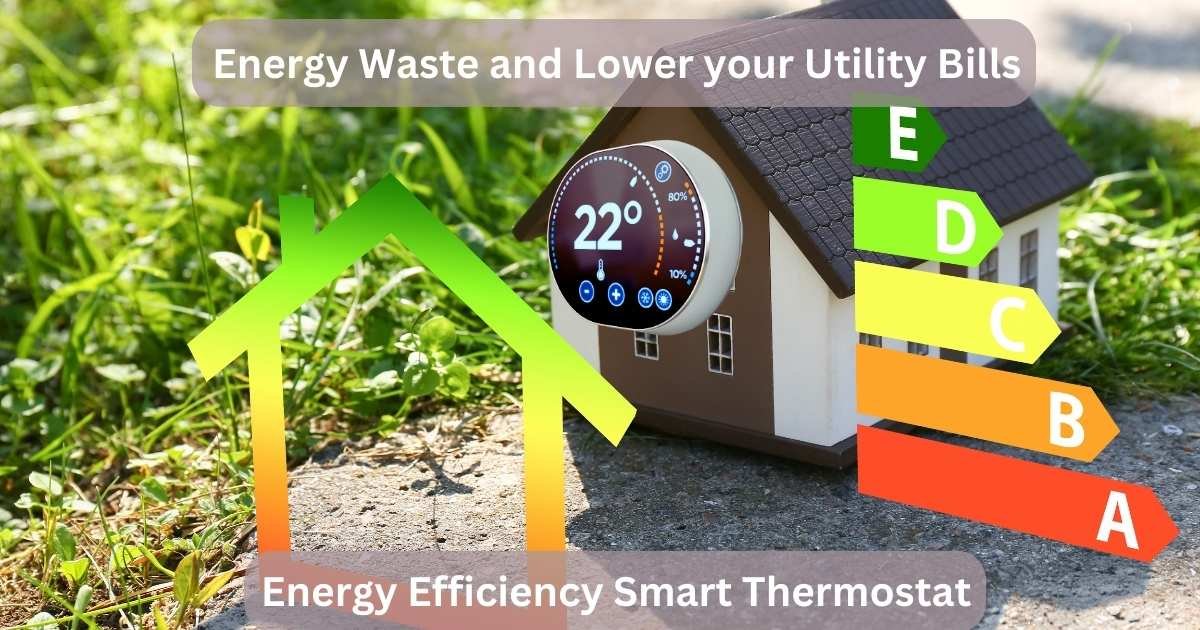
With a traditional thermostat, you manually set the temperature and often forget to adjust it when you leave the house or go to sleep. This means that you may be heating or cooling an empty home unnecessarily for hours at a time. Smart thermostats, on the other hand, use advanced sensors and algorithms to learn your habits and patterns. They can detect when nobody is home or when everyone is asleep, and adjust the temperature accordingly.
Another way that smart thermostats promote energy efficiency is through their ability to integrate with other smart devices in your home. For example, if you have connected lights or window shades that are also connected to your smart thermostat, they can work together to optimize energy usage. When no one is in a room, the lights can turn off automatically and the shades can close to prevent heat loss or gain.
In addition, some smart thermostats offer features such as geofencing which uses GPS technology from smartphones to detect when you’re approaching home so it adjusts temperatures accordingly beforehand ensuring comfort upon arrival while minimizing unnecessary heating/cooling periods before anyone arrives.
3. Convenience and Control
Convenience and control are two of the major advantages that come with using a smart thermostat. With traditional thermostats, you often have to manually adjust the temperature by physically interacting with the device. However, smart thermostats offer a higher level of convenience by allowing you to control your home’s temperature settings remotely. A smart thermostat for multiple zones is capable the convenience and easy control.
Imagine arriving home from work on a chilly winter evening. Instead of walking into a cold house, you can use your smartphone or voice assistant to turn up the heat before you even step foot inside. This level of control not only ensures comfort but also helps save energy by reducing unnecessary heating or cooling while you’re away.
Additionally, many smart thermostats for multiple zones come equipped with features like learning algorithms and occupancy sensors. These advanced technologies allow your thermostat to learn your schedule and preferences over time, automatically adjusting temperatures based on when you’re typically at home or asleep.
Furthermore, some models integrate with other smart devices in your home such as lighting systems or security cameras. This integration enables enhanced automation and coordination between different aspects of your household for optimal comfort and energy efficiency.
The convenience and control offered by smart thermostats make them an attractive choice for homeowners who value both comfort and efficiency in their daily lives. By providing remote access capabilities, personalized scheduling options, and seamless integration with other smart devices, these innovative devices can truly transform how we interact with our home’s climate control system
4. Remote Access and Monitoring
One of the major advantages of using a smart thermostat is the ability to access and monitor your home’s temperature remotely. With traditional thermostats, you would need to physically adjust the settings if you wanted to change the temperature while away from home. But with a smart thermostat, you can do it all from your smartphone or tablet!
Imagine being able to turn up the heat before arriving home on a cold winter day, ensuring that your house is warm and cozy when you walk through the door. Or maybe you forgot to lower the temperature before leaving for vacation – no problem! Simply open up your smart thermostat app and make adjustments as needed.
Remote access also allows for greater control over energy usage. If you notice that your heating or cooling system is running excessively while you’re not at home, simply use your smart thermostat app to make changes and cut down on wasted energy.
In addition, many smart thermostats offer monitoring capabilities that provide insights into how much energy your HVAC system is consuming. This information can help identify patterns or areas where efficiency can be improved, ultimately resulting in cost savings.
Remote access and monitoring features offered by smart thermostats add convenience and flexibility to managing your home’s temperature settings. It puts control literally in the palm of your hand!
Disadvantages of Using a Smart Thermostat
While smart thermostats offer numerous benefits, they also come with their fair share of disadvantages. Here are some factors to consider before making the switch.
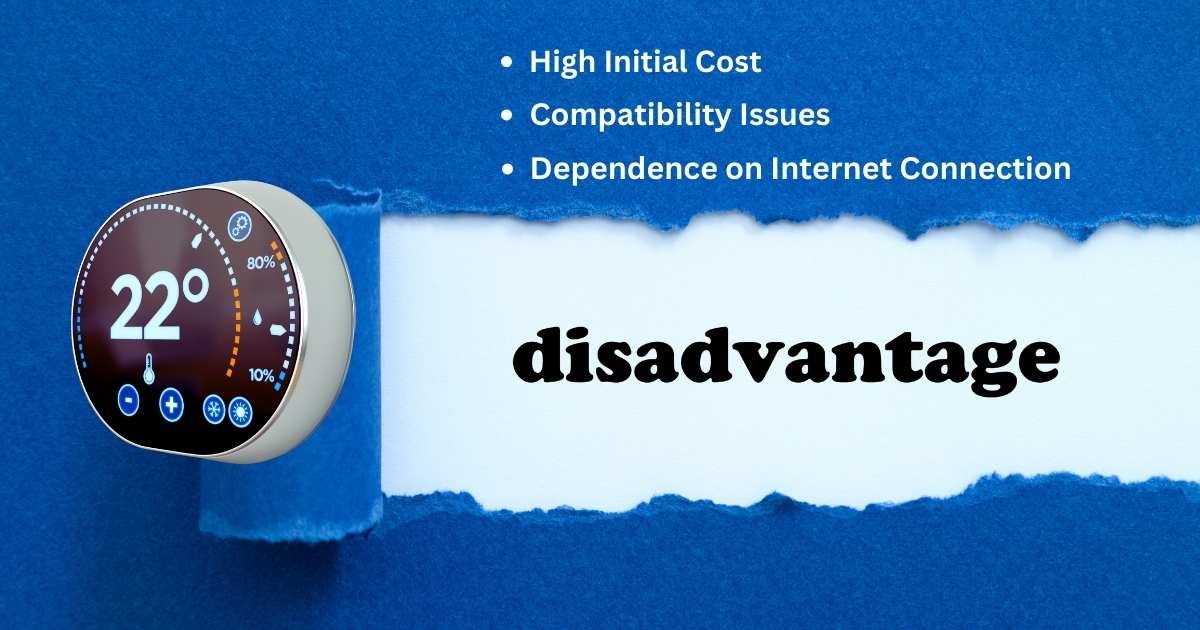
1. High Initial Cost:
One major drawback of smart thermostats is their high upfront cost compared to traditional thermostats. The advanced technology and features that make them so appealing can also drive up the price tag. However, it’s essential to weigh this against potential long-term savings on energy bills.
2. Compatibility Issues:
Another challenge with smart thermostats is compatibility. Not all HVAC systems work seamlessly with these devices, which could require additional installation or upgrades. It’s crucial to check if your system is compatible and ensure proper integration for optimal performance.
3. Dependence on Internet Connection:
Smart thermostats rely heavily on an internet connection for remote access and control. If your internet goes down or experiences disruptions, you may lose access to these features temporarily until the connection is restored.
Despite these drawbacks, it’s important to note that many people find the advantages of smart thermostats far outweigh the disadvantages. With careful consideration and research beforehand, you can choose a device that suits your needs and overcomes any potential downsides.
Comparison with Traditional Thermostats
When it comes to controlling the temperature in our homes, traditional thermostats have been the go-to option for many years. However, with the advent of smart technology, a new player has entered the game – smart thermostats. So how do these two options stack up against each other?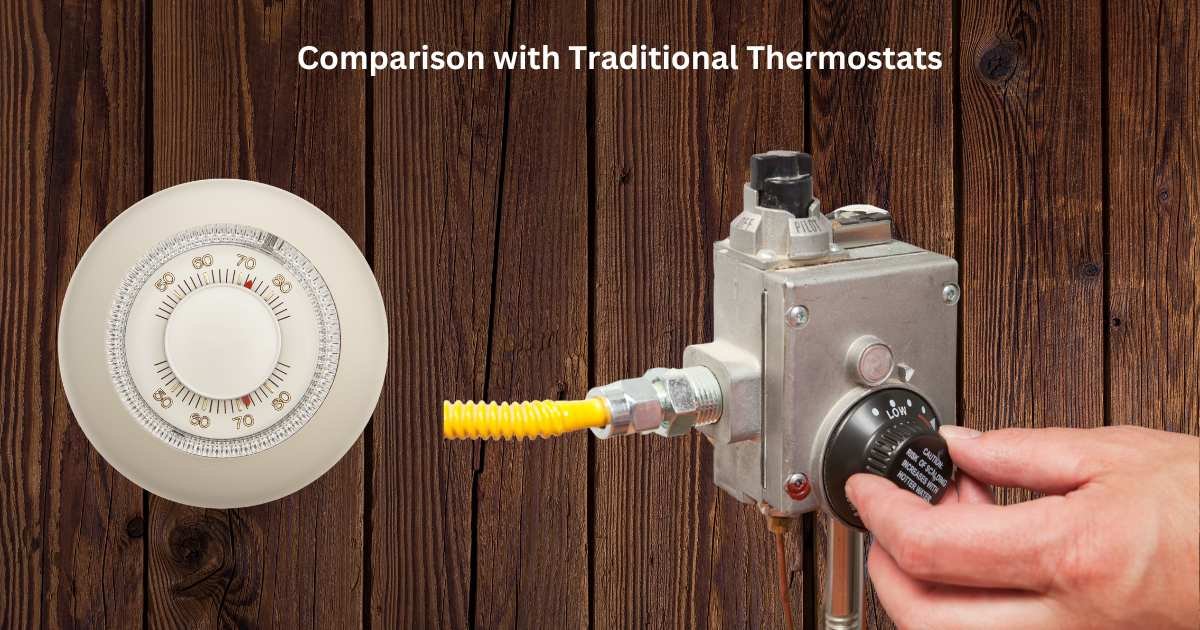
One key difference between smart and traditional thermostats is their level of control and functionality. While traditional thermostats allow you to manually adjust the temperature and set basic programming schedules, smart thermostats take things to a whole new level. With advanced features like learning algorithms and occupancy sensors, they can automatically adapt to your daily routine and even detect when you’re away from home.
Another advantage of smart thermostats over their conventional counterparts is their remote access capability. With a Wi-Fi connection, you can control your thermostat from anywhere using your smartphone or tablet. This means that if you forgot to turn off the AC before leaving for vacation, no worries – just hop on an app and make adjustments as needed.
Energy efficiency is another area where smart thermostats excel compared to traditional ones. By continuously monitoring factors like weather conditions and occupancy patterns, they can optimize heating and cooling cycles accordingly. This not only reduces energy waste but also helps lower utility bills in the long run.
However, it’s worth mentioning that there are some downsides to consider when opting for a smart thermostat instead of a traditional one. The initial cost of purchasing and installing a smart thermostat tends to be higher than that of its counterpart due to its advanced capabilities.
Compatibility issues may also arise when integrating a new smart thermostat into an existing HVAC system. It’s essential to ensure compatibility before making any purchase decisions or seeking professional installation assistance if needed.
Relying on an internet connection adds an element of dependence on operating your device remotely or accessing data analytics provided by some models.
In conclusion (as per instructions), while smart thermostats offer numerous advantages such as cost savings, energy efficiency, convenience
Tips for Choosing the Right Smart Thermostat
When it comes to choosing a smart thermostat, there are a few key factors to consider. Here are some tips to help you make the right decision:
1. Compatibility: Before purchasing a smart thermostat, ensure that it is compatible with your existing heating and cooling system. Some thermostats may require additional wiring or professional installation.
2. Features: Consider the features that are important to you. Do you want voice control capabilities, integration with other smart home devices, or advanced scheduling options? Take into account your specific needs and preferences.
3. User-Friendliness: Look for a smart thermostat that is easy to use and has an intuitive interface. You want something that can be easily set up and adjusted without any hassle.
4. Energy Efficiency Ratings: Check if the smart thermostat has energy efficiency ratings such as ENERGY STAR certification. This will help you save on energy costs in the long run.
5. Brand Reputation: Research different brands and read customer reviews before making your final decision. Opt for well-known brands with positive reputations for reliability and customer support.
6. Price: While cost shouldn’t be the only deciding factor, it’s essential to consider your budget when choosing a smart thermostat. Remember that higher-priced models often come with more advanced features.
By considering these tips, you’ll be able to choose the right smart thermostat that suits your needs while maximizing energy savings and convenience in your home.
Remember, using a smart thermostat has numerous advantages such as cost savings through efficient temperature control, increased energy efficiency leading to reduced environmental impact, convenient remote access, and monitoring capabilities, among others.
However, there are also disadvantages like high initial costs of purchase and installation as well as compatibility issues with older HVAC systems.
Ultimately though, the benefits outweigh the drawbacks when properly chosen based on individual requirements. Investing in a smart thermostat can provide significant long-term benefits both financially and environmentally while providing comfort at your fingertips!

